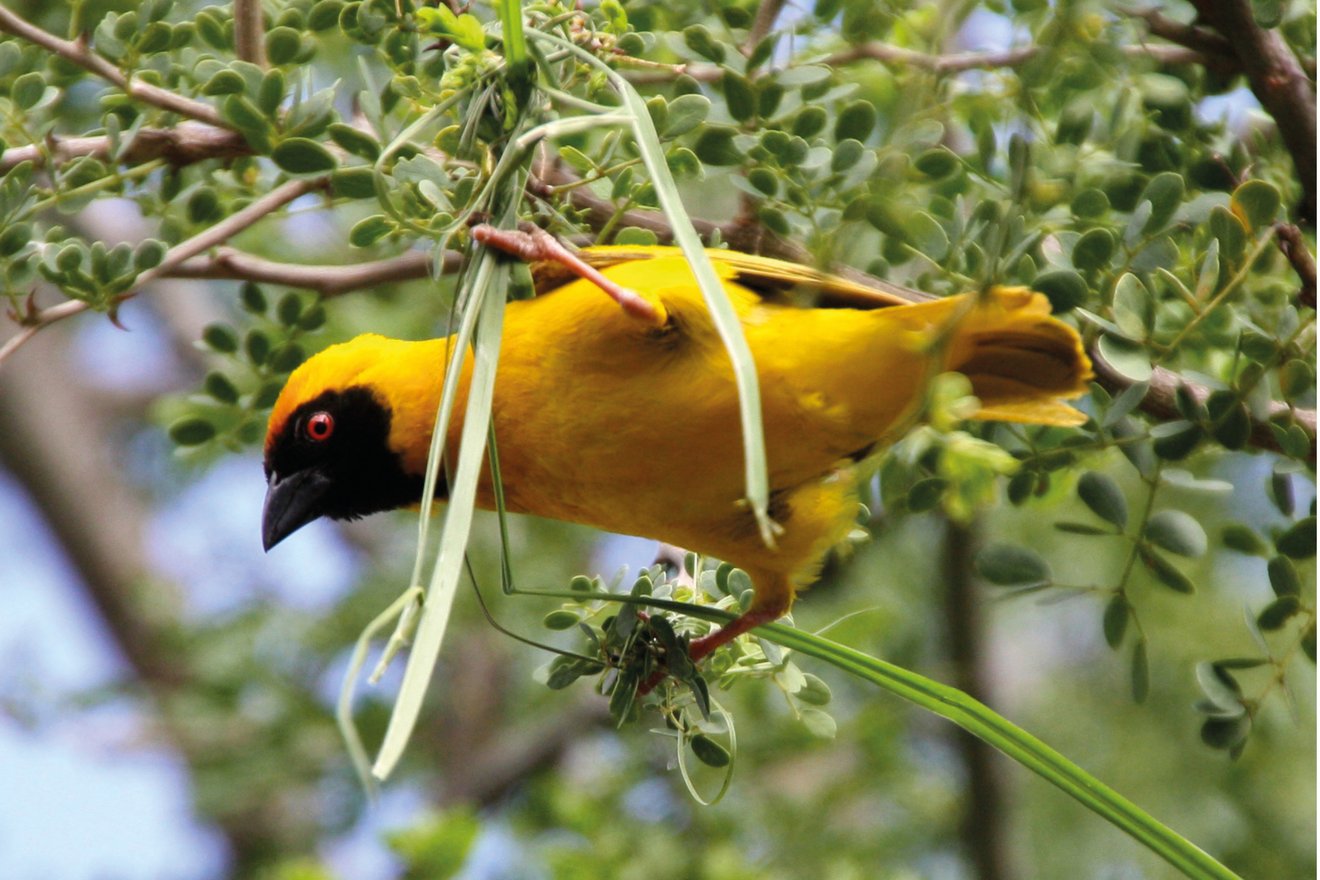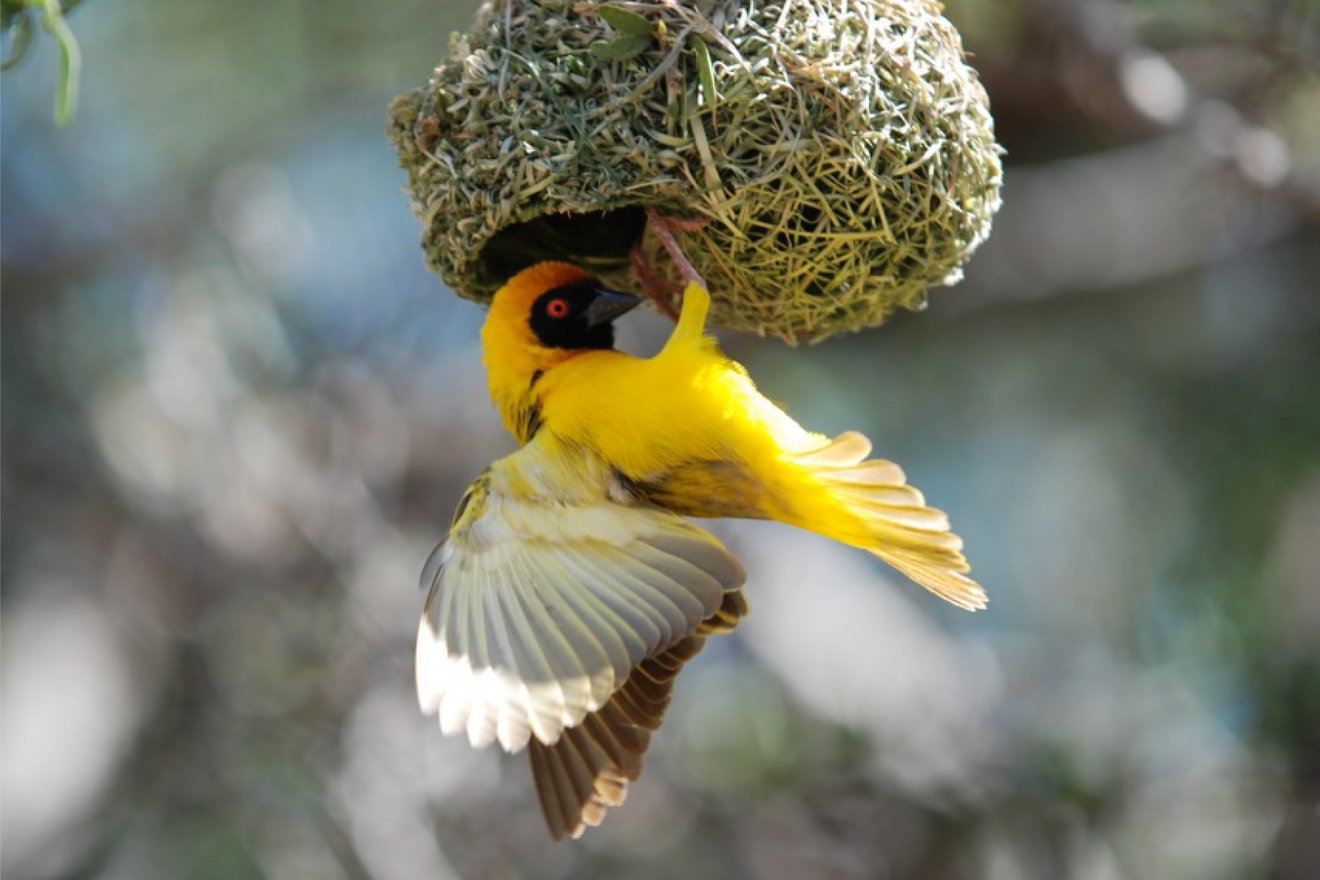Masked weavers are widespread across southern Africa, particularly in Namibia, Angola, Zambia, Malawi, Mozambique and South Africa. They inhabit a variety of environments, including bushland, savannahs, grasslands, wetlands and even urban parks and gardens. In the arid regions of western and inland South Africa, they are especially common.
Masked weavers belong to the weaverbird family (Ploceidae) and are highly adaptable to different habitats. The characteristic bright yellow plumage of the males, highlighted by a distinctive black “mask” on the head, is especially vivid during the breeding season. However, it’s not just the flashy outfit that helps them win over their chosen mates. In an effort to attract a female, a masked weaver can build up to 25 nests per year in the species’ typical teardrop shape.
Master nest builder
NESTING ARTISTS OF THE SAVANNAH
The masked weaver is widespread in Namibia. Its ability to build intricate nests and its striking appearance make this cheeky little bird, which nests in the trees surrounding the veranda of our lodge, a popular photo subject. Discover more about this social whirlwind:
Male masked weavers are true Casanovas and aim to impress their chosen females not with just one home, but with a whole handcrafted neighbourhood. Before mating, a female will often require up to five nests before being satisfied with her suitor’s efforts. As males are polygynous, they may build up to 25 nests in a single season, each taking around five days to complete. Constructed from grass or plant fibres, the nests hang from tree branches and have a characteristic teardrop shape, with entrances located on the underside. To protect against snakes, the males strip leaves from the chosen branch to ensure a clear view of any approaching predators.
Interestingly, studies have shown that nest building is not purely instinctive – males improve their technique over time through experience and practice.
Masked weavers are omnivorous with a preference for plant-based food. They feed mainly on seeds, grains, fruits and nectar but will also consume insects. During foraging, they are often seen alone or in small groups but may occasionally join larger flocks of seed-eaters.
Masked weavers are not only known for their extraordinary nest-building skills. Their social behaviour is equally fascinating. Remarkably, they are the preferred host of the diederik cuckoo (Chrysococcyx caprius), which lays its eggs in the masked weaver’s carefully constructed nests.




